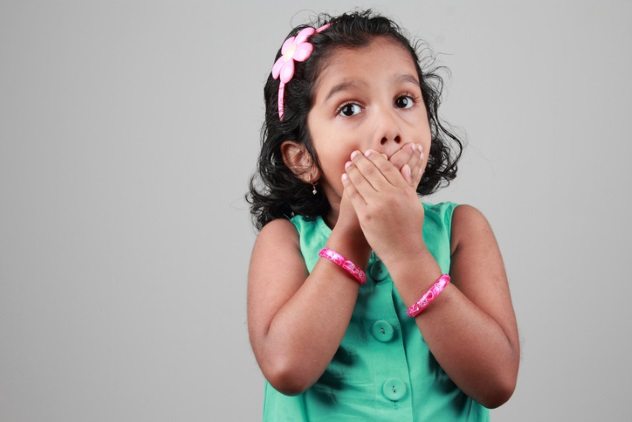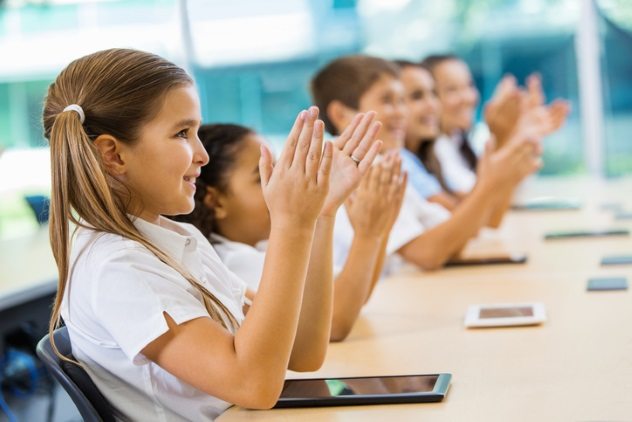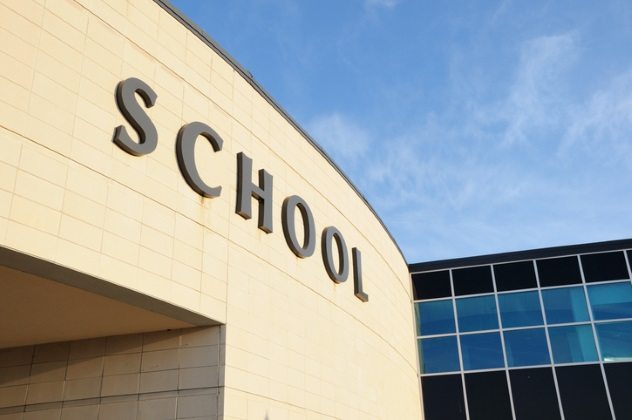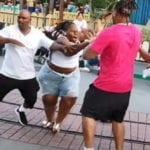 Weird Stuff
Weird Stuff  Weird Stuff
Weird Stuff  Mysteries
Mysteries 10 Tragic Disappearances and Deaths in Joshua Tree National Park
 History
History 10 Ways Childhood Really Sucked in the Old West
 Music
Music 10 Name Origins of Famous Bands from the 1990s
 Religion
Religion 10 Biggest Turnarounds by the Catholic Church
 Weird Stuff
Weird Stuff 10 Unbelievable Times Laws Had Unintended Consequences
 Humans
Humans Ten Historic Women Who Deserve Way More Credit Than They Got
 Movies and TV
Movies and TV 10 Films That Spawned Major Lawsuits
 History
History Ten Times Towns Were Wiped Off the Face of the Earth
 Creepy
Creepy 10 of the Most Disturbingly Haunted Public Houses in the UK
 Weird Stuff
Weird Stuff 10 Niche Subcultures That Are More Popular Than You Might Think
 Mysteries
Mysteries 10 Tragic Disappearances and Deaths in Joshua Tree National Park
 History
History 10 Ways Childhood Really Sucked in the Old West
Who's Behind Listverse?

Jamie Frater
Head Editor
Jamie founded Listverse due to an insatiable desire to share fascinating, obscure, and bizarre facts. He has been a guest speaker on numerous national radio and television stations and is a five time published author.
More About Us Music
Music 10 Name Origins of Famous Bands from the 1990s
 Religion
Religion 10 Biggest Turnarounds by the Catholic Church
 Weird Stuff
Weird Stuff 10 Unbelievable Times Laws Had Unintended Consequences
 Humans
Humans Ten Historic Women Who Deserve Way More Credit Than They Got
 Movies and TV
Movies and TV 10 Films That Spawned Major Lawsuits
 History
History Ten Times Towns Were Wiped Off the Face of the Earth
 Creepy
Creepy 10 of the Most Disturbingly Haunted Public Houses in the UK
Top 10 Crazy Things That Crazy Schools Have Banned
Schools are remarkably strange places at the best of times. Hyperactive children are often immature and prone to hissy fits, teachers are burdened with mountains of red tape and marking, and helicopter parents issue persnickety demands. The job is tough.
While many educators get it right, some teachers and educational institutions have been known to bring trouble on themselves. Whether it’s through bizarre interpretations of health and safety bureau babble or head teachers trying to micromanage every aspect of pupil well-being, schools have been known to do some pretty silly things.
With that in mind, we take a look at some of the strangest things that our educators have attempted to ban. From limitations on “body-banging” sports to the eradication of “best friends,” it would appear nothing is too sacred to ban.
10 Words

In 2012, the New York Department of Education, in all its glorious wisdom, decided to ban a slew of words that children might deem offensive. Companies bidding for examination contracts were provided a list of inappropriate words. Obscenities did not get much of a look-in, but words like “dinosaur” and “birthday” did. It takes a pretty nimble mind to perform the mental gymnastics needed to appreciate the department’s logic. Talk of dinosaurs, you see, could displease religious fundamentalists who do not subscribe to Darwin’s theory of evolution. Jehovah’s Witnesses don’t celebrate birthdays, so that was out.
“Halloween” was also proscribed, as it could upset individuals sensitive to the subject of paganism (and ghouls, goblins, and zombified DOE bureaucrats). Mention of diseases was to be be avoided like the plague, just in case test-takers had any ill relatives. Discussion of poverty could make the impoverished ashamed of their poverty. “Expensive gifts, vacations, and prizes” could make some students jealous.
All in all, around 50 topics were banned from standardized tests. Insensitive references to divorces, junk food, nuclear weapons, politics, religion, sex, slavery, sorcery, terrorism, vermin, violence, war, and bloodshed were a no-no. “Bodily functions,” “death and disease,” “catastrophes/disasters (tsunamis and hurricanes),” and “homes with swimming pools” are just a few other surprising mentions.[1]
In explaining the bizarre list, a DOE spokesperson said the following: “This is standard language that has been used by test publishers for many years and allows our students to complete practice exams without distraction.”
9 Red Ink Markings

We turn to our Australian friends now. Over the last decade, hundreds of schools throughout Australia have started issuing a rather curious demand to teaching staff: Cease marking students’ work with red ink. According to recommendations issued to schools in Queensland, red ink could inflict psychological damage on youngsters. Here is Crofton Junior School headmaster Richard Sammonds explaining his approach:
We use highlighter pens in all colours of the rainbow—apart from red. There are pinks, blues, greens and fluorescent yellows. The idea is to raise standards by taking a positive approach. We highlight bits that are really good in one colour and use a different colour to mark areas that could be improved.
A number of schools throughout the UK are now using pink pens to mark school work, as red ink is considered too “aggressive.” A language teacher told The Telegraph that he now draws pink boxes at the end of each piece of submitted work, in which he must insert complementary feedback in green ink.
Other UK academies, meanwhile, have adopted an intricate six-pen marking system—a move then–Education Secretary Nicky Morgan labeled “ridiculous.” Many students are now exposed to a rainbow-colored assortment of markings, including blue, purple, and green. Another technique, called “deep marking,” allows students to produce written responses to their teachers’ markings. In essence, teachers mark, students respond, and then teachers mark again. Deep marking is used by around three quarters of all British schoolteachers, raising concerns that staff are wasting time on an unproven feedback strategy.
However, spare a thought for pupils of Bristol’s Bedminster Down School, who are no longer receiving any markings at all. Headmaster Gary Schlick, using “evidence-based research,” believes that markings could demoralize students and damage their confidence. The concept of grades appears to be disappearing, too. “As a school we had moved away from putting grades on work some time ago—if you put a grade on a piece of work all they do is look at the grade,” proclaimed Schlick, authoritatively.[2] Instead, Schlick and co. are transitioning to “live marking,” a technique that allows teachers to sit down with each pupil and assess their work, face-to-face. This way, teachers can offer more encouragement and emphasize some of the more positive aspects of their academic toils. It begs the obvious question: Growing up with such an oppressive marking scheme, how on Earth did Schlick become such a well-adjusted head teacher?
8 Triangular Flapjacks

A school in the English county of Essex decided to ban triangular flapjacks after one of its pupils sustained a brutal injury at the hands of a flapjack-wielding degenerate in 2013. The troubled troublemaker, armed with the delicious, oat-based weapon, identified weakness in the eyes of a fellow pupil. With that, he hurled the freshly baked sustenance at his unsuspecting victim. The projectile hit its target, stirring mass panic. The injured party was sent home with a sore eye.
The school was keen to stress that the incident was an infrequent occurrence. Regardless, out of an abundance of caution, it sought to introduce a ban on triangle-shaped flapjacks. A spokesperson for Castle View School offered the following super serious statement: “I can confirm that the texture and shape of the flapjacks were reviewed following an isolated accident last week.” Although the review found that triangular flapjacks were dangerous, on account of their pointed edges, square flapjacks were still permitted.[3] Eagle-eyed locals were quick to point out that square flapjacks also possess pointy edges.
Flapjacks are by no means the only food source removed from school cafeterias. In a bid to improve the diets of Los Angeles schoolchildren and tackle childhood obesity, chocolate- and strawberry-flavored milk were banned. However, officials overlooked one fundamental fact: Children like drinking flavored milk. Taking away flavored milk meant fewer school children consumed milk, unflavored or otherwise. Ultimately, this led to increased wastage of plain milk and the attendant environmental problems that came with having to dispose of masses of sour milk. Studies have also shown that a ban on flavored milk, while cutting down on overall sugar intake, results in children consuming less protein and calcium. Five years on, the Los Angeles Unified School District made an embarrassing climb down and started reintroducing flavored milk.
Zooming back to the UK, we find that the parents of one Stoke-on-Trent school were sent letters in 2018, telling them what items were banned from their own children’s lunch boxes. To promote healthy eating, Abbey Hulton Primary School said pupils were not allowed candy, chocolate, cereal bars, sausage rolls, soda, or flavored water.
7 Ball Games And Competitive Sports Days

At Oakdale School in Connecticut, recess has undergone some significant changes. The school principal, to spare hurt feelings and encourage teamwork, took the ban hammer to traditional sports activities in 2007. Soccer, kickball, dodgeball, and, as Principal Mark Johnson puts it, “body-banging” activities are prohibited. Instead, recess now consists of more timid pastimes, including chess, jump rope, Frisbee, Hula-Hooping, litter picking, singing, and walking. Parents were not happy, however, arguing that it was the school’s duty to prepare students for the competitive onslaught of adulthood. And, of course, if you are going to become a big-league NFL star, you might need to pick up a ball every once in a while.
Principal Johnson eventually compromised. Supervised by a responsible adult, the children were permitted to play kickball, just so long as the score was not kept (a perpetual non-zero-sum game). Teachers also had to patrol the playground to ensure that the more gentle recess activities didn’t degenerate into something out of Apocalypse Now. One parent explained that her child was scolded for throwing a Frisbee too hard.
Oakdale is not alone in its robust attempts to protect the younglings. From ball games to tag, activities considered too rough are disappearing from playgrounds. In parts of Maryland, dodgeball has been either restricted or outright banned since 2001. The Austin Independent School District also banned the game. In particular, the organization’s curriculum specialist, Diane Farr, does not like the sport’s more controversial nicknames: “murder ball” and “killer ball.” “This is something that should not be used in today’s classroom, especially in today’s society,” explained Farr. “With Columbine and all the violence that we are having, we have to be very careful with how we teach our children.” Similar decisions were made in regions throughout Florida, Long Island, Maine, Massachusetts, Texas, and Virginia.
Competitive sports days are also for the chopping block. In Britain, many schools now conduct “non-competitive sports days,” where winners and losers are a thing of the past. Activities focus on encouraging teamwork to guarantee pupils do not feel “singled out.”[4] Once the tedium of the “infant fun runs” and Hula-Hoop Roulette come to a close, one of two things usually occurs: participants are all given a prize, or nobody gets a prize at all. To some schools, prizes are exclusionary and distressing. On occasion, parents have been instructed not to cheer for their little athletes.
6 Books (Lots Of Books)

In 2018, Minnesota schools were instructed to remove a slew of books that boasted controversial language. Epic tales from some of the most revered authors, including Mark Twain and Harper Lee, were banned. One school district said that To Kill a Mockingbird and The Adventures of Huckleberry Finn contained racist language that could potentially marginalize students.[5] As a result, more than two dozen schools were forced to pull the texts from their curricula. The change surprised many book lovers, as both Huck Finn and Mockingbird are widely regarded as anti-racist tales. Naturally, racist characters and racist language were included to convey racism. But some readers took a dim view to the language and thought the books were, in fact, promoting racism. Anti-censorship groups pushed back, arguing that a book’s purpose was to make readers think, not to make them feel comfortable.
Director of Curriculum and Instruction Michael Cary said the book banning was in response to years of complaints. “We felt that we could still teach the same standards and expectations through other novels that didn’t require students to feel humiliated or marginalized by the use of racial slurs,” stated Cary.
Book banning in schools is a common occurrence. Toni Morrison’s 1987 fiction book Beloved was removed from an English class in Kentucky’s Eastern High School in 2008. The censorship came shortly after two parents complained that the book was gratuitous. The Pulitzer Prize–winning book, which chronicles the life of a runaway slave, includes references to bestiality, racism, sex, and violence.
Meanwhile, The Fault in Our Stars was banned from schools in the Riverside Unified School District in California in 2014. The ban was triggered after a horrified parent, Karen Krueger, brought the book’s dark themes to the attention of teaching staff. In particular, Krueger felt the book’s emphasis on mortality could disturb impressionable youngsters. Author John Green responded to the outcry thusly:
I guess I am both happy and sad. I am happy because apparently young people in Riverside, California will never witness or experience mortality since they won’t be reading my book, which is great for them. But I am also sad because I was really hoping I would be able to introduce the idea that human beings die to the children of Riverside, California and thereby crush their dreams of immortality.
In 1996, Moby-Dick was banned from advanced English classes in a school in Lindale, Texas. The 1851 masterpiece was pulled over fears that it was inconsistent with “community values.” While nobody really knew what community values Moby-Dick was supposedly debasing, such reasoning is routinely trotted out by the censorious.
Ray Bradbury’s Fahrenheit 451—a tale about purging books from society—was censored in one school in Irvine, California. Words like “abortion,” “damn,” and “hell” were redacted to please sensitive parents. Publisher Ballantine Books released a censored edition for high school students. Unhappy with the alterations, Bradbury demanded the publisher remove the edited versions from circulation.
In 2011, Sir Arthur Conan Doyle’s A Study in Scarlet was no longer required reading at a number of schools in Albemarle County, Virginia. The Conan Doyle classic was labeled “anti-Mormon” and unsuitable for the pliable minds of youths. One concerned parent said the book perpetuated inaccuracies surrounding American religion.
J.D. Salinger’s Catcher in the Rye is arguably one of the most suppressed stories of all time. At the time of publication, Catcher was infamous for its rebellious teen protagonist, Holden Caulfield. Upon release, critics lambasted the New York Times bestseller for its offensive and crass language. A reviewer with the Christian Science Monitor said the book was unsuitable for children because of its “immorality and perversion.” Over the years, Salinger’s brainchild was criticized for promoting blasphemy, promiscuity, homosexuality, and anti-white overtones. Others were unhappy that a 16-year-old was depicted smoking and drinking. Schools in Issaquah, Washington, went so far as to ban the novel on the basis it was part of a “communist plot.” Between 1966 and 1975, there were over 40 attempts to ban Catcher in the Rye from schools.
Bury My Heart at Wounded Knee, Catch-22, Gone With the Wind, Hamlet, Invisible Man, and The Scarlet Letter, among others, have all been banned in various schools across the United States. This culture of banning and expurgating texts has spawned the Banned Books Week Coalition—an alliance of book lovers who fight censorship and promote the “freedom to read.”
5 Snowball Fights

Just north of the border, peace hangs in the balance. Danger, in the form of adolescent Canucks, lurks around every corner. These terrifying agents of chaos have a weapon of choice, a weapon that Toronto school officials yearn to eradicate: the deadly snowball.
According to the schools in question, snowball-related skirmishes are violent and dangerous and must be stopped. The Toronto District School Board system superintendent said such acts of wanton violence would not be condoned. According to the superintendent, children throwing “rocks, sticks, or snow” will face reprimand.
In 2007, a group of British schoolchildren were suspended for contravening a ban on snowball fights.[6] The incident took place at Bretton Woods Community School in Peterborough, England. Describing the incident as “rank disobedience,” Headmaster John Gribble said the ban was in place for health and safety reasons. “At school, we are responsible for the children’s health and safety. Children could have been injured if ice was in the snowballs, for example,” Gribble lamented.
Unsurprisingly, the island nation’s health and safety aficionados have weighed in on other playground activities. Hundreds of UK schools have now banned conker matches for fear of horse chestnut–related injuries. Several rather remarkable schools claimed the ban was to protect kids with nut allergies. British bulldog, jump rope, leapfrog, marbles, and tag have also been proscribed at various institutions.
The Brits are even afraid of their own clothes. In 2010, a school in Greater Manchester sent out letters to its students, telling them that their traditional knotted ties presented a danger. Here is Principal John Peckham: “Obviously there is a health and safety element. Pupils can take precautions during technical lessons where there is machinery but it is the unexpected factors such as running and having their ties pulled that could be a problem.”
4 Best Friends

When educators aren’t hyperventilating over health and safety, they like to cogitate over social engineering boondoggles. As part of a disturbing trend to brew the perfect child, some schools are trying to stop pupils from having “best friends.” Instead, it is hoped that kids will form close relationships with a large number of pupils. This, so the theory goes, will promote an inclusive atmosphere and stamp out possessive relationships.
Prince George of Cambridge currently attends a London school that endorses this strategy.[7] The headmaster of Thomas’s Battersea, Ben Thomas, said it could prove necessary in younger students, aged around four to ten. Thomas maintains that an end to this traditional friendship model could provide children with “a wide range of good friends rather than obsessing too much about who their best friend is.” He also argues that obsessive relationships can result in ostracism and hurt feelings.
According to London counselor Gaynor Sbuttoni, a number of schools are now dividing pupils into large groups during playtime. American school educators are starting to adopt the same practice. St. Louis counselor Christine Laycob used similar terminology to her contemporaries, explaining how “possessive” relationships were problematic. In a 2018 article, clinical psychologist Dr. Barbara Greenberg said there was “merit to the movement to ban having best friends.” In expressing how besotted she is with “social inclusion,” Dr. Greenberg slammed the concept of best friends as “inherently exclusionary” and judgmental.
Some of the nation’s summer camps have even resorted to employing “friendship coaches.” At one such camp in Phoenicia, New York, these coaches swoop in to separate children on the brink of becoming best friends. Kids forming these unacceptably close bonds are forced to occupy different seating arrangements and mingle with other camp-goers.
3 Running And Cartwheels

As a young whippersnapper, you may have witnessed purple-faced teachers screeching at your unruly classmates for running in the corridors. This is perfectly normal. What is not normal, however, is banning children from running on the playground. This is the ban introduced in 2016 by Headteacher Tim Cook at the Hillfort Primary School in Cornwall. After a flurry of complaints from parents, Cook said running was permitted, but only in designated areas of the playground. The partial ban, says Cook, was to guarantee the health and safety of pupils. The decision was overturned after Judy Murray, the mother of British tennis champ Andy Murray, intervened. “How utterly absurd. No wonder we are becoming a nation of fatties,” stated a dumbfounded Murray.[8]
This ban was not an isolated case.
Summerhill Infant School in Bristol, England, had a similar no-running policy. One mother only found out about the ban after seeing her son skipping everywhere, a crafty means of outwitting his scholastic overlords. The head teacher said the policy was a necessary response to a rise in head bumps. Students who engaged their legs in excessive activity were made to face a wall in silence.
Meanwhile, an Ontario school in Canada proposed a controversial cartwheel ban in 2017. The following was listed in the school’s draft handbook on playground etiquette: “Cartwheels are not permitted.” Officials later clarified that the ban was considered over fears of potential litigation.
2 Clapping

In 2016, staff at Elanora Heights Public School in Sydney, Australia, felt it necessary to ban clapping during assemblies. The school feared the percussive din could upset a teacher with noise sensitivities.
School officials happily provided pupils with alternative methods of conveying their enthusiasm. The children—who were 100-percent not dazed and confused by the perfectly not-confuse-worthy changes—were told to “punch the air,” “silently cheer,” or “wriggle on the spot.” This was confirmed in the school’s newsletter, which the teaching staff felt brave enough to send to parents:
Did you know our school has adopted silent cheers at assembly’s [sic]?
It continues:
If you’ve been to a school assembly recently, you may have noticed our students doing silent cheers. Instead of clapping, the students are free to punch the air, pull excited faces and wriggle about on the spot. This practice has been adopted to respect members of our school community who are sensitive to noise. When you attend an assembly, teachers will prompt the audience to conduct a silent cheer if it is needed. Teachers have also found the silent cheers to be a great way to expend children’s energy and reduce fidgeting.[9]
In other Australian schools, hugging is also verboten. Instead, pupils are encouraged to use high fives, fist bumps, or knuckle handshakes. The principal of St. Patrick’s Primary School said, “Not everyone is comfortable in being hugged.”
1 Curved Buildings

In 2012, the British Education Funding Agency (EFA) said it would outlaw the construction of school buildings that featured curved walls or windows. It was thought that the cost-saving initiative would make better use of space.[10] Restrictions were placed on the overall building dimensions and classroom sizes of some 261 replacement school structures.
Ever since, costs have been cut by applying “efficient wall to floor ratios,” “design repetition” and right-angled configurations that have, “no curves or ‘faceted’ curves.” Many building designs are now devoid of “notches” and “indents.” The guidelines even have a formula aimed at minimizing the “circulation area” of students. Here’s the formula for secondary schools:
1050m2 (+ 350m2 if there is a sixth form) + 6.3m2 / pupil place for 11- to 16-year-olds + 7m2 / pupil place for post-16s
And for primary schools:
350m2 + 4.1m2 / pupil place
Formerly, ICT rooms were a mandatory requirement in primary school buildings. The EFA dramatically reduced the size of primary schools by removing this requirement, on the basis that ICT equipment is now more portable than ever.
Read about more surprising and ridiculous bans on 10 Surprising Things Once Banned From TV Broadcast and 10 Beloved Children’s Books Banned For Stupid Reasons.








